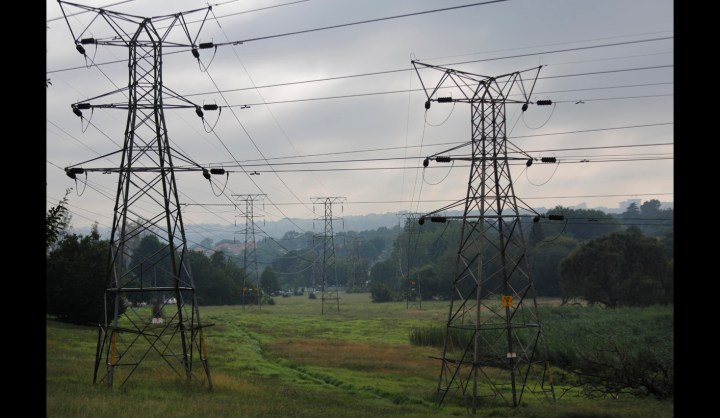South Africa
Domestic electricity prices: Eskom vs. City Power

There is a widespread perception that City Power and other municipal electricity distributors buy electricity from Eskom and then resell the electricity to domestic customers within their areas of supply with massive mark-ups and at significantly higher prices than would be the case if Eskom supplied such domestic customers directly. By CHRIS YELLAND.
While the domestic electricity prices of some municipal distributors may be higher than Eskom’s in some cases, a closer examination of the facts shows that this is certainly not always the case, and in particular in respect of the domestic electricity prices of City Power (Johannesburg) as compared to Eskom domestic electricity pricing nationally (including areas such as Soweto, Sandton and Midrand).
Recent social unrest in Soweto highlighted the danger of public misunderstanding of the price differences between Eskom’s prepaid and credit meter tariffs, and also between the domestic electricity tariffs of Eskom and City Power. The problem is that both Eskom tariffs and City Power tariffs are presented in such an unintelligible way that very few domestic customers are able understand them, let alone compare them in order to make rational conclusions and choices.
A previous article compared Eskom single phase domestic prepaid and credit meter tariffs. In the light of statements by Eskom acting CEO Brian Molefe suggesting that Eskom should take over electricity distribution from municipal distributors such as City Power, this article compares Eskom’s single-phase domestic prepaid and credit meter tariffs with those of City Power in order to shed some clarity on the subject.
In this analysis, only 230V single-phase tariffs have been considered as these are in use by the significant majority of domestic customers. Three-phase domestic tariffs are only applicable to relatively few domestic customers, and seasonal and time-of-use tariffs have only recently been introduced, and are not in widespread use at all.
It should be noted the prices considered are the current published tariffs applicable as at 19 May 2015. Municipal electricity tariffs generally increase on 1 July each year, and Eskom has submitted an application to the National Electricity Regulator of South Africa for a further 12.61% price increase for its 2015/16 financial year, which, if approved, is likely to become effective on 1 September 2015.
For both credit and prepaid customers, Eskom and City Power have inclined block tariffs for energy (kWh) consumption, where the energy tariff rates increase depending on the level of usage. However, Eskom has only two energy usage bands, while City Power has five. In addition, Eskom’s 80A credit meter option and City Power’s 60A and 80A credit meter options have a fixed monthly capacity and service charge that applies even when there is no energy consumption. Eskom’s 60A credit meter tariff is offered to “electrification customers” only, and has identical rates to Eskom’s 60A prepaid tariff.
The relevant Eskom and City Power single-phase domestic tariff options and rates are shown in Table 1 and Table 2 below.

Table 1: Eskom single-phase domestic tariff rates, inclusive of VAT

Table 2: City Power single-phase domestic tariff rates, inclusive of VAT
The tariff rates of Table 1 and Table 2 are then used to prepare Table 3, in which the tariff rates are translated into monthly electricity billed values (in rands), for each of the seven tariffs under consideration, and for consumption levels of up to 4,000 kWh per month. It should be noted that because of its limited capacity, the energy usage with the Eskom 20 A prepaid meter tariff option only extends up to 1,500 kWh/month.

Table 3: Monthly electricity costs inclusive of VAT for various tariffs and electricity consumption values
Fig. 1 below presents Table 3 graphically, with linear interpolation between the various consumption points, making it easier to visualise and compare the monthly electricity bill accurately for any level of electricity consumption for the various tariffs.

Fig. 1: Monthly electricity bill, inclusive of VAT, as a function of kWh consumed per month, for various tariffs
Conclusions
From Fig. 1 the following can be observed:
-
As would be expected with a limited capacity supply, the Eskom 20A prepaid tariff offers the lowest prices for electricity consumption up to 1500 kWh per month. But with a capacity one third of that of the City Power 60A prepaid tariff, the 20A supply is indeed a significant constraint.
-
The City Power 60 A prepaid tariff offers the best pricing by far over the full range of electricity consumption up to 4,000 kWh per month.
-
The Eskom 60 A prepaid and 60 A and 80 A credit tariffs offer significantly lower pricing than the City Power 60A and 80 A credit tariffs for middle and lower consumption customers using below about 1,000 kWh per month.
-
The City Power 60 A and 80 A credit meter tariffs offer significantly lower pricing than the corresponding Eskom 60 A prepaid and credit tariffs for middle and higher consumption customers using above 1,300 kWh per month.
-
The City Power 60 A and 80 A credit meter tariffs offer significantly lower pricing than the corresponding Eskom 80 A credit tariff for middle and higher consumption customers using above 1,100 kWh per month.
It is hoped that the above will clarify common misperceptions in respect of City Power and Eskom domestic electricity tariffs and pricing. DM
Chris Yelland is investigative editor at EE Publishers.
Photo: Eskom power lines are seen running in the southern suburbs of the countries biggest city, Johannesburg, South Africa, 29 January 2015. The country has been experiencing power outages as the national power supper,Eskom, struggles to supply enough power. EPA/KIM LUDBROOK



















 Become an Insider
Become an Insider